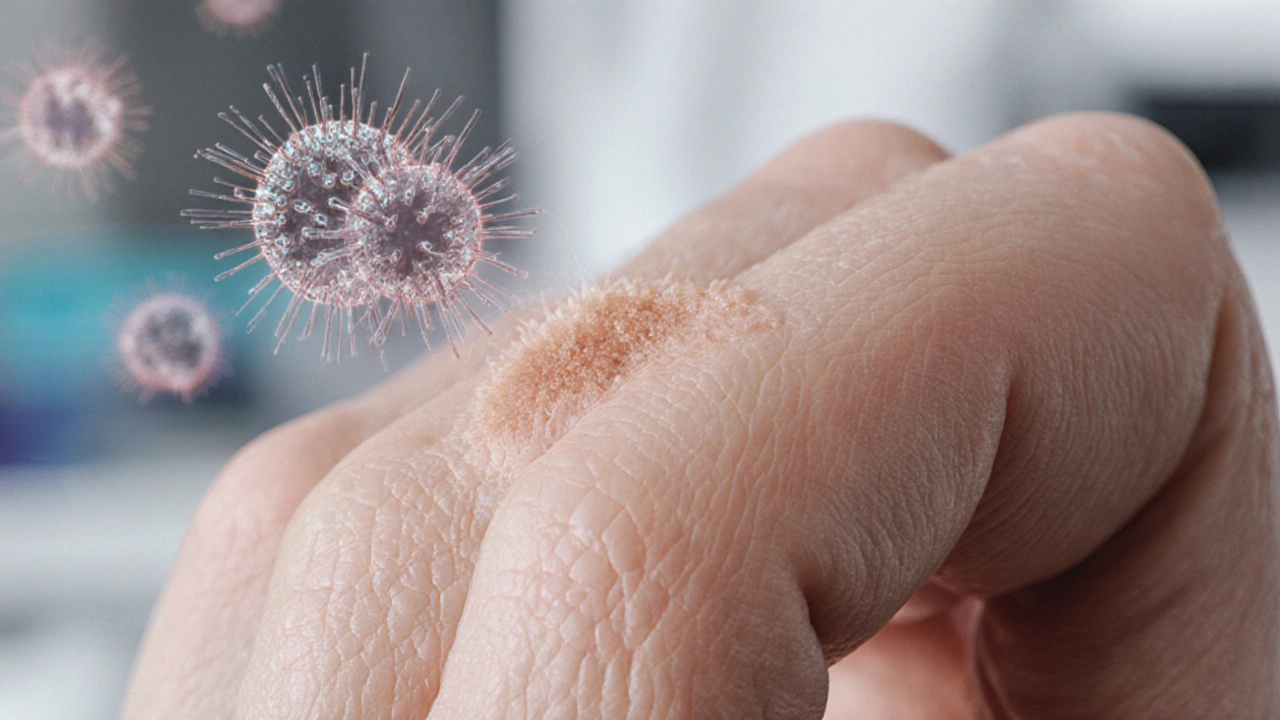
Learn how HPV causes common skin warts, identify risk factors, explore treatment options, and discover preventive steps, including vaccine insights.
When you hear the term skin warts, small, rough growths that appear on the surface of the skin, usually on the hands, feet, or face. Also known as verrucae, they are a common skin condition caused by Human papillomavirus (HPV), a virus that infects skin cells and triggers rapid growth. While anyone can develop warts, women often notice them during hormonal shifts or after minor skin injuries, making awareness especially important for those tracking their health. HPV strains 1, 2, and 4 are the usual suspects, and the virus spreads through direct skin‑to‑skin contact, shared towels, or even gym equipment. Most warts are harmless, but they can be painful, especially when they appear on weight‑bearing areas like the soles of the feet. Recognizing the typical dome‑shaped, flesh‑colored bump helps you decide if you need treatment or can let it fade on its own.
The good news is that several effective methods exist to clear warts quickly. Cryotherapy, the process of freezing the wart with liquid nitrogen, destroys infected cells in minutes and often requires only a few sessions. Another popular at‑home choice is salicylic acid treatment, which gradually peels away the wart’s layers after daily application. Both approaches target the virus‑laden tissue while sparing surrounding skin. For stubborn cases, doctors may suggest immunotherapy creams that boost the body’s natural response, or laser therapy for precise removal. Side effects are usually mild—temporary redness, swelling, or a slight stinging sensation—but it’s wise to follow product instructions or a clinician’s guidance to avoid scarring. When choosing a method, consider the wart’s location, size, and your comfort with medical procedures; a small fingertip wart may respond well to salicylic acid, while a thick plantar wart often needs cryotherapy.
Prevention focuses on limiting HPV exposure and supporting skin health. The HPV vaccine, originally designed to prevent cervical cancer, also reduces the risk of cutaneous HPV infections that cause warts, making it a valuable tool for both teens and adults. Practicing good hygiene—washing hands regularly, keeping feet dry, and avoiding sharing personal items—cuts down transmission. If you notice a new bump, apply a protective bandage and monitor it for changes; early intervention can keep a wart from spreading or becoming painful. Should a wart persist beyond a few months, grow rapidly, or cause discomfort, schedule a visit with a dermatologist or primary‑care provider. Armed with the right knowledge, you can identify, treat, and prevent skin warts effectively, turning a minor nuisance into a manageable part of your health routine.

Learn how HPV causes common skin warts, identify risk factors, explore treatment options, and discover preventive steps, including vaccine insights.